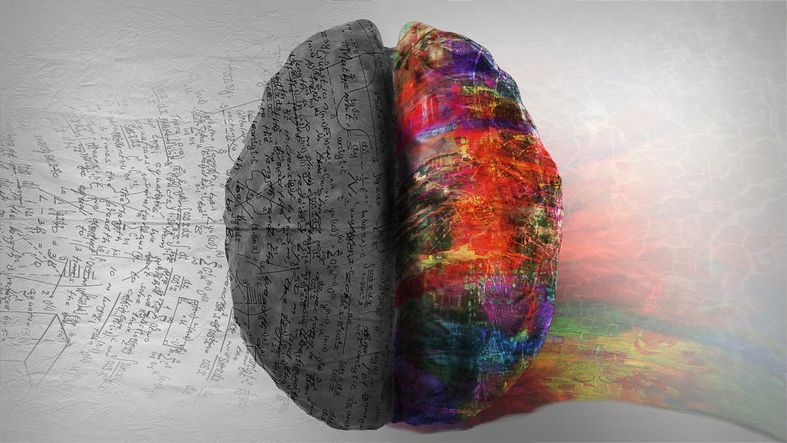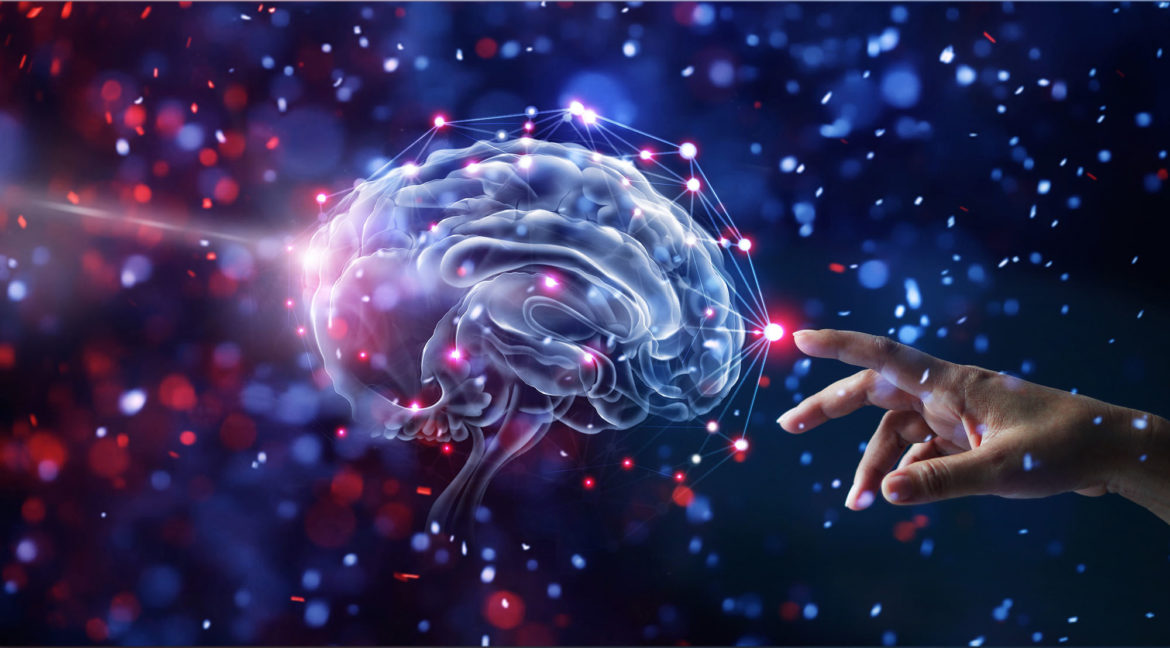Counseling is one of the few professions that therapists rarely consider the organ they are treating. They rarely look at the functionality of the brain.
This blog entry is designed for those who work with clients whose lives are out of control. I use this training in my work with domestic violence batterers, men in jail/prison, those on parole or on probation and for those struggling in their relationships. This is not a medical training, nor is it meant to be. Rather, it is a very rudimentary and simple consideration of how events lead to consequences and the thinking steps in between.
Thinking vs Feelings

What happens when our feelings run and sometimes ruin our lives?
Think for a moment about the many times that we hear people say things like.
“I feel that this is the right way to do something”. Or “I feel that something is missing.” Or “I feel like so and so doesn’t like me.” In other words, they use the word I feel instead of I think. My family member used the word feel instead of think when she said that, “I feel like I need something form the store.” I have never felt like going to the store. I may think that we are out of bread or peanut butter, but I don’t know what if feels like. Instead of I think that I need something in my pantry. I ask myself, is this really an important issue? Does it really make any difference if you and I use the words think and feel interchangeably? Am I really feeling or am I thinking.
As a counselor and a professor of counseling for many years, I often see people in trouble because they don’t think. They feel. As a result, they often feel their way through life and relationships. Thinking and feeling are two different brain functions. Many of their lives are out of control because their feelings are not a clear picture of reality. People whose behaviors are out of control often blame significant others for how they feel. This can be very destructive in a relationship and it is a false blame. In short no one can make you feel anything.
In truth, thinking or self-talk paints a word picture that becomes distinctions in the brain. These distinctions actually meld together as a world view or filter that all events must pass through before becoming a feeling or emotion. This may sound difficult to understand, but it’s not. Bear with me and allow me to explain and this will begin to make sense, maybe even life changing.
Do events cause consequences in our lives?
This is an important question to ask yourself in order to change or take control of untoward behaviors. Events happen in our lives all the time. They are neither good or bad, they just are. How we evaluate the event in our thinking (self-talk) is then stored in the brain as a concept or distinction, which then becomes part of our schema or world view. We then develop feelings (We project the feelings onto the event- that we sense as an emotion.) The feelings then motivate us to make choices which drive behaviors — which have consequences.
Events > self-talk > distinctions in schema > emotions or feelings > choices > behaviors > consequences
Do events in our lives lead to consequences? Are there some steps that we need to become aware of, in order to have a greater self-control over the consequences in our lives?
Events
Are the events in our lives good or bad or something in-between? Actually, they are neither good nor bad. All events are neutral. If a tree falls in the woods, is that good or bad? Answer, neither, it just is. In order for an event to have a value, we must give it a value. This is done by way of or thinking about the event. Value requires language and evaluation. Thinking involves language or self-talk. We learn our self-talk (words we use) from our families, friends’ neighbors, community, teachers and culture. We use self-talk to evaluate events. Often self-talk occurs so quickly that we may not be aware of what we just said to ourselves. This is sometimes called “Automatic” self-talk.
The real miracle of the human brain is not it’s parts or it’s construction but rather how it talks to itself
Distinctions
Distinctions begin to have value by way of our learning and how we evaluate it though language. Distinctions are simple concepts that we recognize and use to make sense of the various fragments of our world. For example; I own a white 2010 Toyota Venza. Let me ask you, “How many do you see on the road? “Unless you have one, you would probably answer none or ask “What is a Venza?” I think that I see every one that is on the road. Why, because that is within my set of distinctions. Whatever car you drive, you probably notice almost everyone you see. When it comes to understanding our world, we tend to project our distinctions.
Our brain is not so much a camera, as it is a projector. We tend to project our distinctions onto what we think we see in order to make sense of it all.

Schema
Our schema is made up of all of our various distinctions. These distinctions are learned and often take the form of stories about our lives. Histories and self-talk include values which are learned during our stages of development. Be aware that memories can grow and change. The accumulation of our distinctions become our overall world view. In the brain it is located 3 centimeters below the Neo-Cortex (Frontal Lobe) known as the Anterior-cingulate. The Anterior-cingulate is a receptacle for accumulating all the fragments of distinctions and then it formulates them into a systematized whole of how we see our world. This includes how we view and evaluate ourselves in a given situation. It is also a filter that all events must pass through to be evaluated for authenticity. If the information conflicts with what we know in the schema (Anterior-cingulate), we may actually feel somewhat “off balance”. On the other hand, the perception of the event may be considered to be irrelevant and then can be discarded. If the information is viewed as important or a threat of some kind., then the Limbic system becomes involved.
What you say about someone else actually says more about you than it says about them.
How accurate are our distinctions? In other words, how accurate is our perception of what happens or what we think we know or see?

What is the most inaccurate evidence given in a criminal trial? The answer is “Eye witness testimony.” Our memories both grow and fade over time or can be contaminated by talking to someone else. For example, whenever there is a bank robbery, the FBI investigators want the management to immediately separate all of the employees to make sure they don’t talk to one another, thereby avoiding contamination of the witness’s memories. Again, this can happen when they talk and compare memories of what happened.
If ten people see a car accident and immediately write down what they see, there will probably be ten different variations of what happened. No two people accurately see what they think they see. There will be variations because we tend to project from our schema and from the point of view of the many distinctions we hold true. This is called a bias. Professional witnesses such as police are taught to recognize their own biases and limit what they think they see to just the facts. Facts need to be present in order to corroborate the officer’s recollection of what may have happened. Remember Sargent Friday. (Dragnet) “Just the facts mam, just the facts”. Yes, but even though they are trained, they can still have a bias. That is why we have defense attorneys. They try to sort out any biases that the testifying officer has. That is why all testimony must be supported and corroborated by physical evidence.
Feelings or Emotions
Feelings (emotions) do three things. First, they reinforce the establishment of distinctions in the schema; secondly, they act to motivate us to action and thirdly they cause the Hypothalamus to write significant memories onto the surface of the brain for long term memory. Our brains need a “motivator”. Without motivation, (feelings) we would all sit around all day and do nothing. We would never make choices, get together, find food, build a shelter, procreate, form societies, develop complex rules and boundaries, invent things or develop all of the many important advances that we take for granted in our daily lives. If the feeling is powerful enough, it can make us do a range of heroic feats of gallantry or unfortunate acts of personal and social destruction. Simply put, emotions or feelings are motivators. If we pay attention and listen to our own thinking, (self-talk) feelings can give us insight into what we have just said to ourselves. Namely, how we are talking to ourselves about and evaluating things that are going on. Put another way, when I pay attention to my feelings, and before I act on them, I name the feeling, and then I ask myself, what did I just say to myself that caused me to generate this feeling. Often our self-talk can actually be inappropriate for our circumstances. The following hint takes practice and self-awareness for most people to master. As you do however, you will get better at it.
Try this

Step one: Get grounded! Become aware of your body and physical environment.
Step two: Feel your emotions.
Step three: Name your feelings/emotions.
Step four: Ask “What did I just say to myself? (Name the feelings.) Self-talk actually feeds back into and reinforces the distinctions in the schema. We think the feeling is valid because it reinforces our memories.
Step five: Ask, “Is this feeling really appropriate for the circumstances in which I find myself?” People are surprised how often they exaggerate, catastrophize or major on the minors.
Step six: Go back and challenge your self-talk. Was that accurate and appropriate for the circumstances? Did I exaggerate? Am I majoring on the minors?
Step seven: Reexamine your options/choices before you act. Or in the case of first responders and military, go to your training.
People are empowered when they realize choices.
Risky awfulizing and catastrophizing self-talk can lead the brain to over react by inappropriately activating the Amygdala in the Limbic system. This is the body’s emotional and emergency responder.
In very threatening situations, the Amygdala first shuts off (or dissociates) from the solution part of the brain. There may not be enough time to figure out or invent a solution. It then goes right next door to the Hippocampus (short term memory) and finds a quick solution that you may have seen or experienced before. The Hippocampus is like a rolodex of emotionally charged memories that the Amygdala flips through to find a quick solution. Remember, this is not the highly refined neocortex or solution part of the brain. These short-term memories in the hippocampus are very rudimentary and may even lead you to over react or do the most god-awful thing you have ever done. This is because it takes the refined solution-oriented neocortex to predict risky outcomes, that can be shut down temporarily during a crisis. This is why firemen, police and military people must practice, practice, practice under simulated stressful conditions. At some level, they already know what they are going to do in most given emergencies. (for the most part) They depend on their training.
The next thing that the Amygdala does is to activate the Pituitary gland (master gland) in a little pocket found in the forward bottom part of the skull, approximately between your cheek bones. This pocket is created especially for the master gland. The Pituitary gland then sends a signal to the Endocrine system to produce hormones and into the brain to activate the sympathetic nervous system. Then it readies the body for five (5) possible “F” commands. (Fight, flight, freeze, fornicate and/or feed. (You just can’t make this up) Time elapsed… 1/16th of a second.
Choices

Dr. William Glasser, in his work with reality theory, later developed Choice Theory which answers the question “How do we make choices in our lives?” I had the honor to meet and talk with him before he passed away. I can tell you that he was a very sweet and funny guy. He was so approachable and tender in his responses. As I was talking with him and bombarding him with questions, he leaned forward, looked intently into my eyes, grabbed me by my shoulders, shook me gently and said, “Barry, buy my books”. I was already star struck. I bought all of his books on choice theory.
One of the features of realizing we have choices, is freedom. We have freedom to have loving fruitful relationships, as Dr. Glasser puts it in his book “Choice Theory”. He writes, everything we do, including the misery we feel, is a choice. It’s not that we choose from a list of possibilities or pieces of information, it’s that we are conditioned to choose. We are internally conditioned or motivated. I believe that internal conditioning is a distinction also. Often, we do certain things because we are conditioned to act a certain way to different stimuli. It’s not the stimuli that causes us to act or respond a certain way, it’s the conditioning. It’s learned!
Here is a great truth.
Whatever can be learned (conditioned) can be unlearned.
This is the freedom that I spoke of earlier.
Behaviors

Behaviors are learned. It is not the stimuli that causes us to act a certain way, it’s the learning. We have all heard of the story of the two wolves. These wolves help us to make choices in our lives. As we grow up, there is the good wolf that influences us to do good things in our lives and the bad wolf that can lead us to our own defeat and destruction. These wolves fight for our attention throughout our lives. I actually did share this story with my granddaughter, Hannah. And like most inquisitive children she asked me the question that I hoped she would. “Papa, which wolf wins?” And like the grandfather in the story, I got to tell her, “The one you feed.” I have the privilege to watch her grow and make choices. Sometimes when she is conditioning herself to treat her brother and sisters less than kindly, I will softly ask her, “Hannah, which wolf are you feeding today”? She is a smart girl. Others don’t make us act or feel, we learn to choose our own behaviors.
We don’t choose behaviors because of events in our environment. We choose behaviors because we have a lifetime of self-talk, that feeds our distinctions that are stored in our schema. This then produces our feelings that both reinforces those distinctions and motivates our learned choices as well as memory production. Our learned choices decide our behaviors which of course have consequences.


Comments are closed.